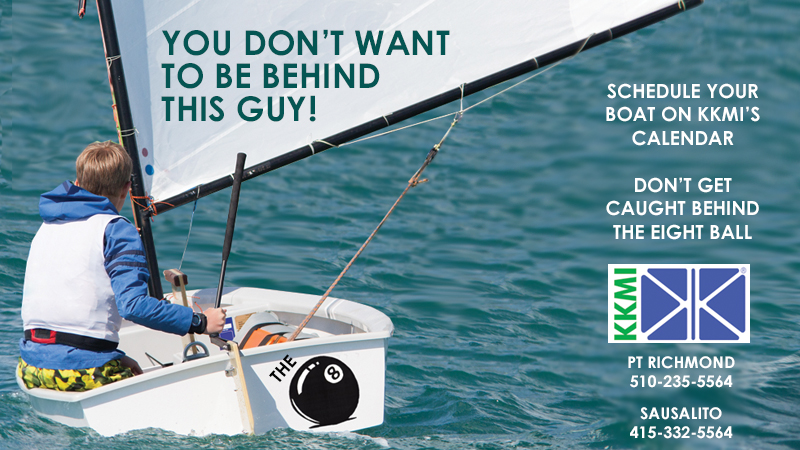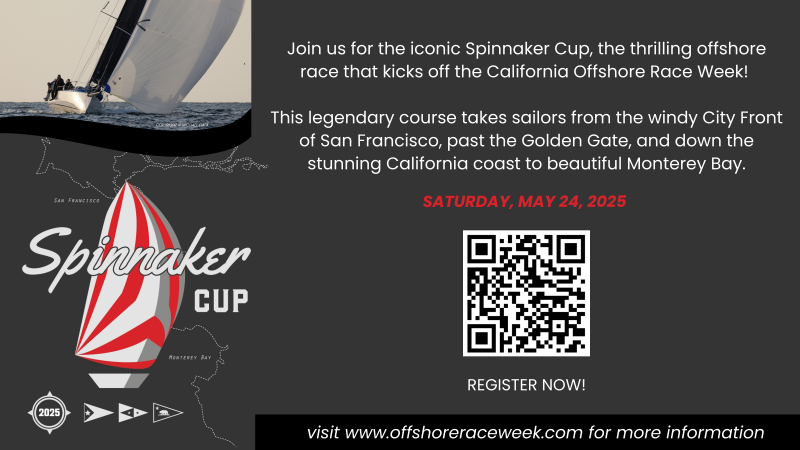
Bullship Race — The First Shall Be Last
The oddsmakers got it all wrong. All of the favorites and early leaders in the 2025 El Toro Bullship Race went into the tank. Defending 2024 champion Chris Sullivan tumbled all the way to the bottom, finishing 17th and in last place. Gordie Nash was 10th, Tom Tillotson 12th, and pre-race favorite Nick Nash was 14th. Instead, it was crafty St. Francis YC sailor Chris Boome who finished in first place, followed by RYC’s Lorn Marcellini. He won the Maiden Voyager Award as the highest-finishing first-timer (among four rookies including Marcellini, Jesse Kittle, who finished third, Kurt Lahr in fourth and Robert Pierce in seventh). Yes, the El Toro fleet certainly gave our Maiden Voyagers a proper welcome — by having the top competitors all follow early leaders Nick Nash and Tom Burden the wrong way!
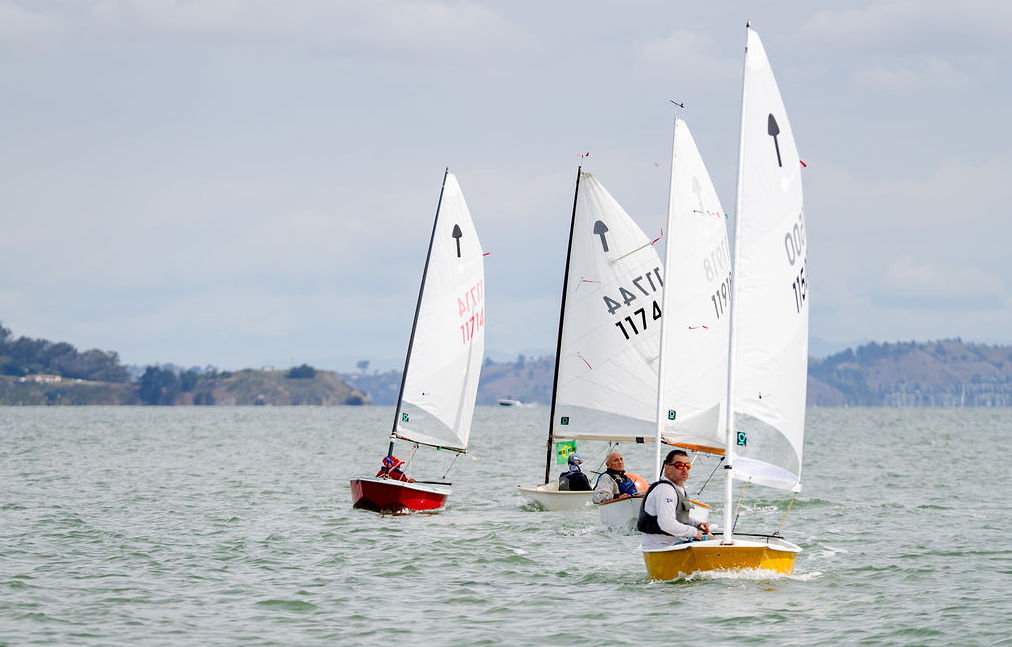
The race started in typical light three- to five-knot breeze at about 9:15 a.m. in front of the Trident Restaurant in Sausalito, and the winner finished at 10:25 in San Francisco, off the east end of the St. Francis YC breakwater. There was a 3.36-knot max flood that peaked at the Golden Gate Bridge mid-span at 9:51 a.m. Nick Nash showed off great footing speed at the start, sailing away from the inshore fleet, while Tom Burden worked better wind to pull ahead offshore, where an early ebb in Richardson’s Bay was beginning. Nash and Sullivan were the first to make the jump across, followed by Burden, Gordie Nash and Tillotson. It was soon down the drain toward Alcatraz to Bullship doom for them and those who followed them.
“The night before I had decided to go along the Marin side to Point Cavallo, then across,” said Boome. When I saw the ‘real El Toro sailors’ going across early on starboard, I couldn’t figure out why they were doing that, but then they were looking pretty good, so I decided to stay with my pre-race plan and kept going up the Marin side.”
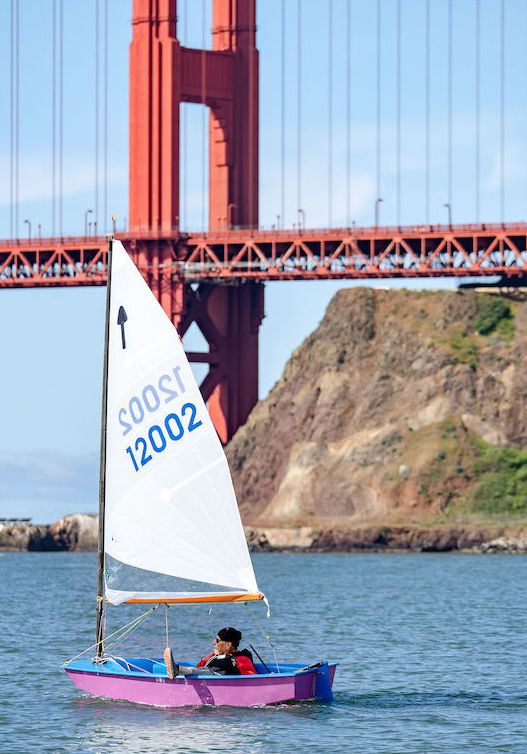
If there were awards for sailing fast the wrong way, Gordie Nash and Tom Burden would win. They were so far behind that the only El Toro Burden could see was Pam DeWitt’s blue hull. “I thought Gordie might be second and Pam was going to win it, and I might be third,” said Burden. “Then I saw some tiny sails moving down the Cityfront — hmmm, they might be El Toros, so I figured maybe I might be fifth or sixth. Then as I finally arrived.in-harbor at the St. Francis YC dinghy dock, I saw 10 El Toros sitting on the dock. I just laughed.”
Pam DeWitt was top Wahine in ninth place. Kurt Lahr was top “Clydesdale” or heavyweight skipper in fourth place. Chris Sullivan joins an illustrious list of past Tail End Charlie award winners. Jim Savattone sailed his beautiful home-crafted Toro, the only wood boat. “I was very happy to win; I never imagined winning the Bullship Race,” said Chris Boome. “Big thanks to Vickie, the Cowship volunteers, and everyone who worked so hard to put this race on.”
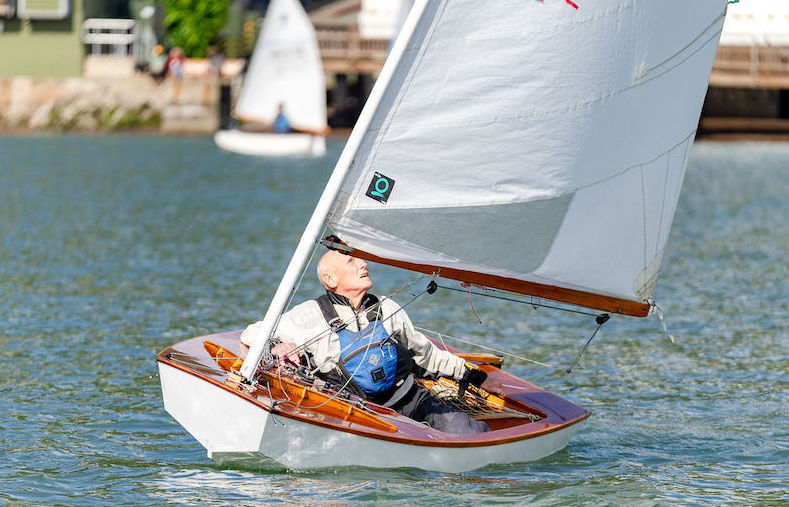
Results are as follows:
- Chris Boome
- Lorn Marcellini
- Jesse Kittle
- Kurt Lahr
- Paul Zander
- Chris Nash
- Robert Pierce
- Sam Nash
- Pam DeWitt
- Gordie Nash
- Tom Burden
- Tom Tillotson
- Hill Blackett
- Nick Nash
- James Savattone
- Vickie Gilmour
- Chris Sullivan
- JV Gilmour (DNF)
RYC Speaker Series and Fundraiser for Jocelyn Nash Film
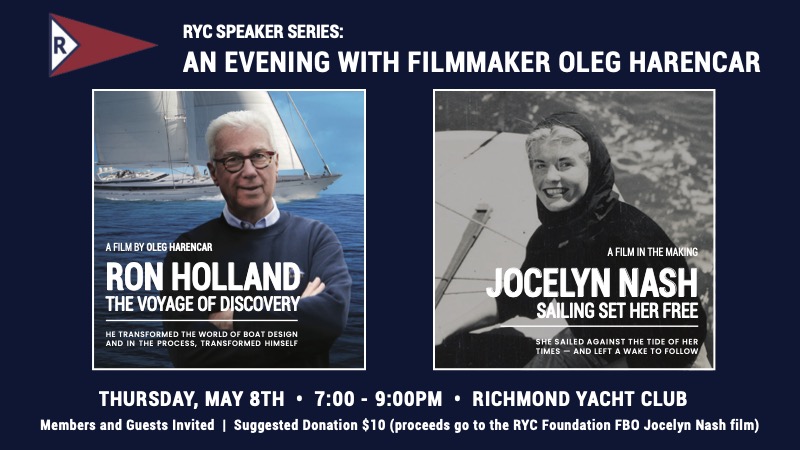
Don’t Get Behind — Schedule Your Service With KKMI Today
BoatUS Raises Concerns About DOGE Defunding of NOAA
Amid the tumult in current attempts to restructure the government are many institutions that have been devoted to keeping mariners safe and the oceans healthy. The cry of “Defund the Police” was roundly criticized because of the legitimate fear it would leave communities more vulnerable to crime. Now the defunding of NOAA and other institutions is leaving many more people and ecosystems vulnerable.
Scott Artis of the Golden Gate Salmon Association has been speaking up about the closing of California’s commercial salmon season and reduction of the recreational salmon season for the third year in a row. The Delta smelt has also been vanishing from the important Delta ecosystem. Upwards of 90% of California’s famed kelp forests have disappeared along the Northern California coast. While we focus on sailing, we know our maritime advertisers also take care of commercial fishing boats, charter boats, recreational fishermen, and other parts of the marine community that are important to their businesses. The commercial marine trades are another part of the marine ecosystem we want to keep healthy.
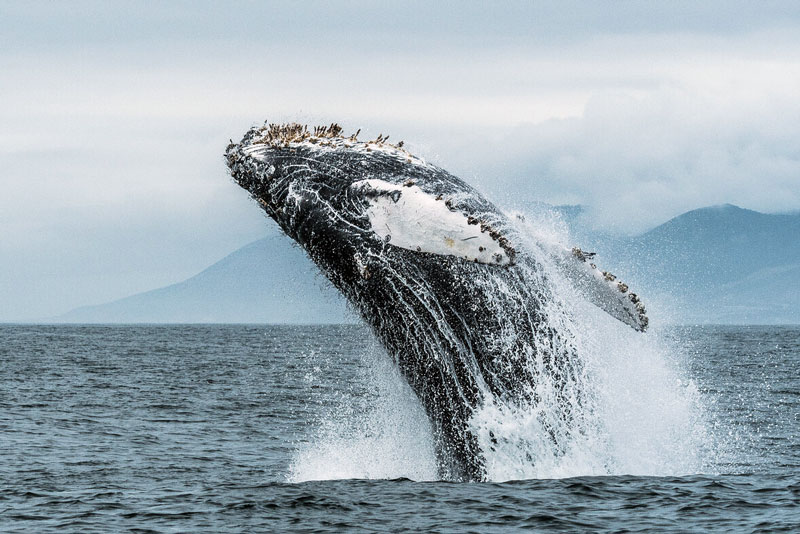
BoatUS lobbies for boaters’ interests in Washington DC. They sent the following press release about the defunding of NOAA. The letter was sent to Tom Cole, R-OK, which feels particularly ironic given that the fate of NOAA and the fears of mariners are being addressed by a senator from one of the country’s most landlocked states. Regardless, we know the concerns of sailors and commercial fishermen and the whole marine industry rely on a healthy ecosystem, good weather forecasting, scientific research, navigation, and many other national services.
Following is the release from BoatUS:
“Springfield, VA, April 1, 2025 – In a recent letter sent to Rep. Tom Cole (R-OK), the Chairman of the Committee on Appropriations to the US House of Representatives, Boat Owners Association of the United States (BoatUS) expressed concern over the Trump Administration’s efforts to reduce the National Oceanographic and Atmospheric Administration’s (NOAA) workforce and implement other budget reductions. BoatUS is the largest advocacy, services, and safety group for recreational boaters with more than 725,000 dues-paying members.”
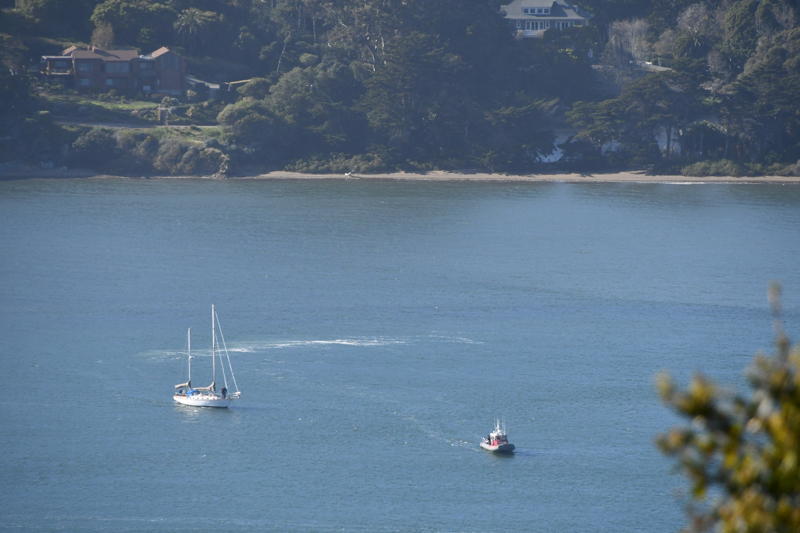
‘Boaters rely on a number of services provided by NOAA agencies such as the National Weather Service (NWS), National Ocean Services (NOS), and the National Marine Sanctuaries (NMS).”
The BoatUS letter says, in part:
“On behalf of our members nationwide, we are concerned that indiscriminate reductions of NOAA agency staff and funding would undermine the safety of boaters on the water and reduce opportunities for enjoyment of marine environments for all. Accurate weather forecasts, updated charts and well-managed resources are vital for the safety and well-being of recreational boating activities across the nation.
“The NWS is responsible for monitoring and predicting severe weather events, such as hurricanes, tornadoes, and floods. These natural disasters can cause significant loss of life and property, and the timely warnings and forecasts provided by the NWS are instrumental in mitigating their impact on boaters. For example, an accurate five-day forecast of a hurricane’s landfall will give boat owners crucial time to prepare for the storm. Reductions in the NWS’s ability to make such forecasts will likely lead to greater vessel losses, more marine debris and costly clean-up operations.
“The Service gathers crucial data that supports a wide range of public and private stakeholders, including military, public safety and maritime operations. Budget cuts to the NWS would not only hinder its ability to gather this critical information but will also negatively impact its interpretation and delivery to all the end-users. We are concerned that broad cuts to NWS staff and funding could weaken the Service’s ability to sustain and enhance its forecasting capabilities, endangering boaters’ lives and increasing the risk of economic losses.”
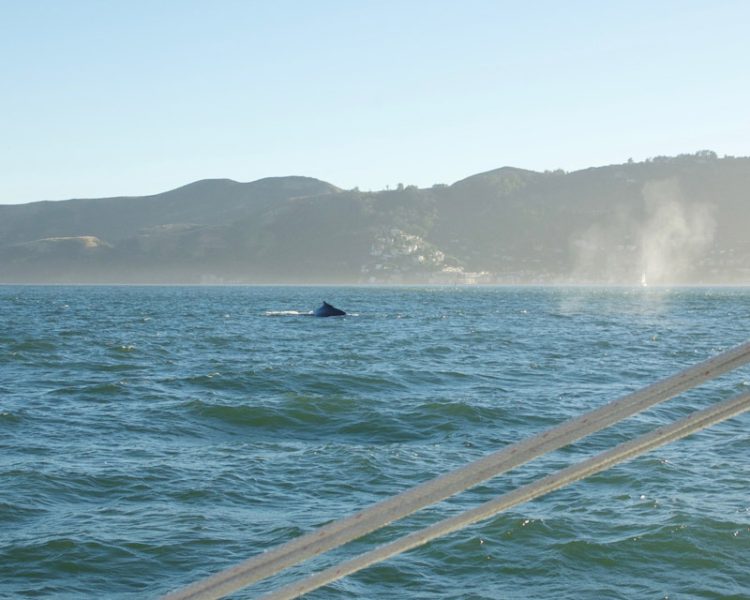
“We have similar concerns with reductions in force and budget cuts for the National Ocean Services and Office of Coast Survey. NOS and OCS gather and interpret accurate underwater surveys and tidal predictions, creating the baseline data on which boaters rely for their charts. Accurate charts and tide information are fundamental to boating safety. We also note that this information is relied upon for many other maritime stakeholders including the US Coast Guard, commercial vessels and the military. Gathering and distributing accurate coastal information is a fundamental governmental function and must be sustained.
“Regarding the National Marine Sanctuary programs, we note that boaters spend countless hours enjoying these marine ‘parks’ and benefit from the conservation work performed by its staff. Recreational uses are well established and managed in many sanctuaries. For example, mooring buoys in the Florida Keys National Marine Sanctuary allow boaters to access these iconic reefs while protecting them from damage from anchors. Open and accessible sanctuaries are a vital part of the $230 billion recreational boating and fishing industry, the single largest component of the $1.2 trillion outdoor recreation economy.”
You can see the complete article from BoatUS here.
We couldn’t agree more. One of the great thrills of sailing on the Bay this spring has been the many gray whale sightings. The increased number of blue whales, humpbacks, gray, and other whales is the result of years of environmental science and conservation. The same will be necessary to achieve a healthy salmon season. The loss of funding for the Romberg Center in Tiburon is another threat to a healthy marine ecosystem. Many of these impacts can feel unrelated to our personal boating activities until we see our home or boat insurance canceled or rates dramatically rise. While it is important to consistently evaluate the benefits and costs of any organization, our conservative nature leans toward a more conservative approach to change. Thoughtful improvement is always welcome. Indiscriminate defunding is irresponsible and dangerous.
Jack Van Ommen — “20th Anniversary of My Dream Come True”
In 2004, on a business/family visit in Europe, my brother-in-law, Herman, 12 years older than I, gave me a ride to Schiphol Airport. “Jaap, don’t you think that you are a bit too old to try to sail around the world?” he asked. I didn’t think so — 68 didn’t seem that old. I wish he were still around so we could discuss that question now.
I could have never expected, in my wildest dreams, that I would still be doing this 20 years later. I am writing this from the Hemingway Marina near Havana, Cuba, on my way north to the Chesapeake. It’s become my second home since I arrived there in 2007 by way of the Cape of Good Hope, having sailed roughly 70% of the solo circumnavigation. In the next couple of days, I’ll be entering the Old Bahama Channel and the Gulf Stream for the fourth time since 2009. And planning to cross the Atlantic for the third time since 2007. Belize became the 66th country I have touched by boat since 2005.
Three marriages, two shipwrecks and one “wreck of a ship” better remain my limits. My last shipwreck was here on the Cuban coast on February 3, 2022. I was on my way to Rio Dulce to do some repairs and check it out for when I grew up and limited in my physical activities to better match my elder equals. One of the reasons for my stop here in Cuba is to try to recover some of my personal things from Fleetwood II.
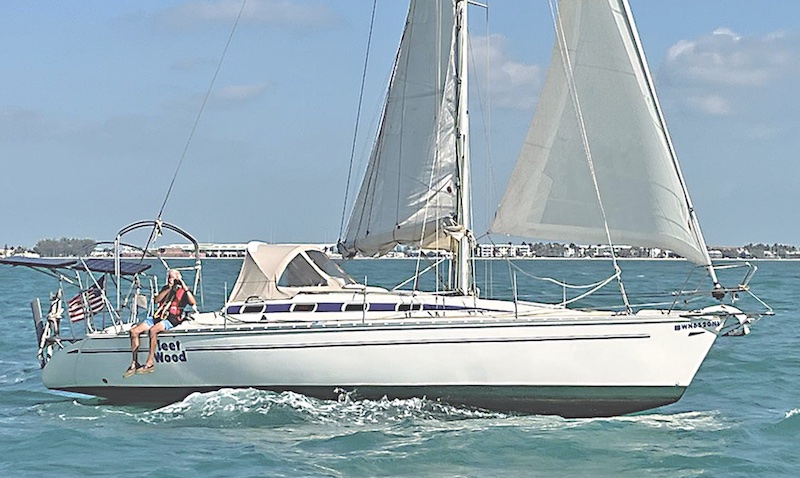
Fleetwood II was built from one of the three Naja kits I had imported from Whisstock’s Boatyard in England in 1980 while I was having the original Fleetwood assembled in winter 1979–1980. I bought it from the second owner in April 2014, after my shipwreck with number one near Ibiza on November 16, 2013. This is the boat with which I completed the still-missing part of the circumnavigation back to the Pacific Coast. I did this in 2016–2017 from Puget Sound, following the 2016 Baja Ha-Ha as a non-official participant (because of singlehanded disqualification). But Richard included me in the onshore fun and let me pitch my story and the SoloMan book.
I continued through the Panama Canal, and exactly a month after my 80th birthday, I finished the missing portion by crossing my 2007 inbound voyage — back-asswards.
Message-in-a-Bottle Hunter Finds West Coast Sailor’s Message
Clint Buffington from Utah is a musician. He’s also a beachcomber who dedicates a good chunk of his time to finding and reuniting messages in bottles with their authors. Buffington has found so many bottles over the years that he’s set up an entire website and online message-in-a-bottle museum. One of his most recent finds has resulted in a connection with Menlo Park man Tom Welch.
Tom Welch was sailing from the Canary Islands to Saint Martin in 2015 aboard the 66-ft catamaran FLASH. Seven days into the voyage, Welch wrote his message and cast it into the sea inside a green bottle. He was 17. The message included an email address for the finder to contact Welch and let him know where the bottle turned up. When Buffington found the bottle in February this year, he thought it could have circled the North Atlantic a couple of times before it was found on a beach in the British West Indies, near Bahama. He told KTVU in an email, “Usually, when a message in a bottle looks this good, we call it ‘young,’ as in, ‘no way has that been floating around very long.’” The message inside was also in good condition, which Buffington attributes to the champagne cork and wire cage used to seal the bottle.
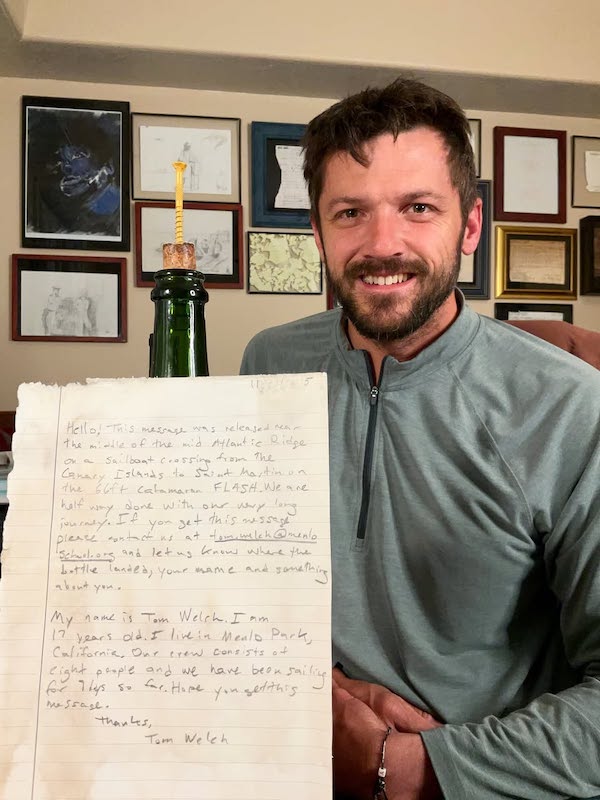
Buffington found his first message in a bottle in 2007 during a Caribbean trip with his father. Since then he has found scores of bottled messages that had been cast into the ocean. A look through his online museum gives an idea of the time frames and travel paths of the bottles and their originators. But aside from the mystery and romance of the storied “message in a bottle,” Buffington shares some history about the origins of casting bottles into the sea. He says bottles were cast adrift in the name of science, that in the early years of ocean science, “[B]ottled letters were the best available means to study ocean currents.” Buffington also says some of the first bottled messages were sent in the 18th and 19th centuries and are still being found today.
But let’s get back to the romance. Who hasn’t imagined picking up a bottle on the beach and finding a message from long, long ago and far, far away? This writer certainly has.
We want to know from you, dear readers: Who has thrown a message in a bottle overboard while on a voyage to or from somewhere? What was your motivation? What did the note say? And has anyone ever contacted you to say they found it? Or, have you ever found a message in a bottle?
Let us know in the comments below, or email us at [email protected].

